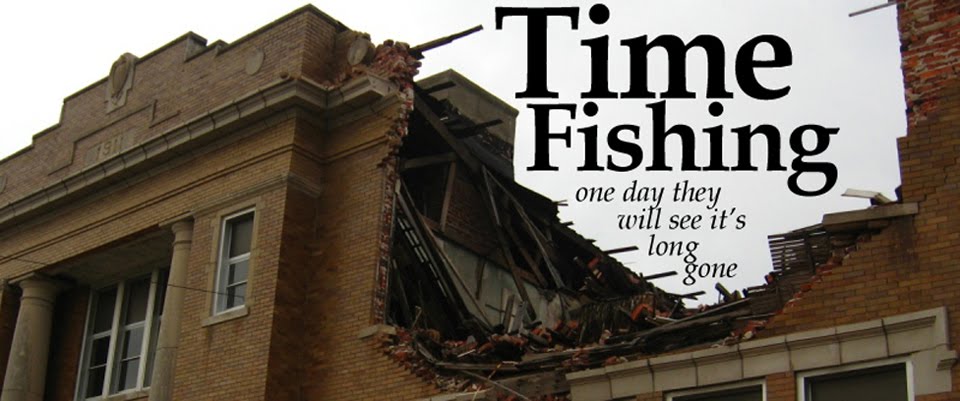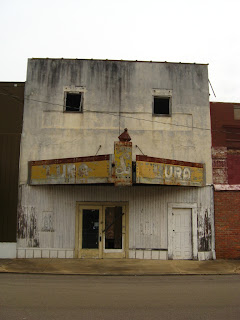In almost every other circumstance I would refrain from posting personal things on this blog (it's not LiveJournal, after all). However, for this I am going to make an exception.

It isn't the best picture of my mom, who passed away around 1 PM, central time, on Friday, but it is from the last time I saw her, on my wedding day (last May).
I know the first question on everyone's lips, whether they admit to it or not, is, "How did she die?" So I'll tell you.
A couple of years ago (let's say around May of 2008), a violent strand of pneumonia attacked her lungs. The doctors thought it might have been tuberculosis, but it didn't turn out that way. The battle was long, and for a while we really thought she wouldn't make it. But she did, with the major casualty being one of her lungs. The doctors considered taking it out then, but for various reasons decided not to.
At the end of '09, close to Thanksgiving, she started coughing up stuff (what she called "green slugs"). She went back to the hospital to discover that a couple of different forms of fungus were growing in her dead lung. Neither of them were cancerous, but they were still causing her breathing problems.
The next thing that happened was a pharmacist misreading her fungicide prescription. That didn't hurt her too much, but another problem occurred when the
correct medicine didn't help at all, but still gave her all of the side effects.
She was in the hospital right through Christmas. Elliot, my brother, stayed with us through his Christmas break because my parents would spend the entire weekend in the ward. She got worse and worse right on through January. The pneumonia came back and resumed its attack on her remaining lung. We were told that if she did recover, it would be a very long road to good health. The few times I spoke to her during this period, she could barely speak for the phlegm interfering with her throat.
By January 13th, the pain medication had been increased to the point where she was no longer responsive. My dad set up a couple of phone conversations with us, with Elliot, and with her two older brothers. The doctors lessened the painkillers so she might at least be able to hear us. That evening, we spoke to her for what we understood would be the last time. It was an odd feeling, talking into a cell phone on speaker-mode and trying to envision my unresponsive mother at the other end.
On the 14th, she was on 100% oxygen. My brother flew down to Virginia so he could see her. I decided not to. I wanted to remember her like she was. Her brothers made the same decision.
On the 15th, after my brother saw her, my dad and the doctors turned off the oxygen. He called me that afternoon to say the words, "Mom's gone."
I had actually intended to work through the rest of the day, but I guess I overestimated my thick-skinnedness. I told Mark (my boss) the news and he let me go home without any qualms.
A lot of things, good and bad, can be said for my mom, so I'll say a few of them.
The first thing that should be known, and will be repeated, is that she performed her job as a mother and caretaker with finesse. Both my brother and I were (are) pretty odd ducks, and she never showed us anything but support for our talents and hobbies. None of this "force the kids to be normal" business that we see on Disney-channel movies. And she understood us. She really did. Even if, for Christmas, she would buy us stuff we never used (devotional books, "Life is Good" shirts, etc.), she had a deeper knowing of our personalities that very few on the planet could match.
When I had problems with relationships (girls), I always knew I could talk to her about it. I never really held out for the answers to my problems, but the things she said always were comforting.
She suffered a lot of headaches, drank a lot of coffee, and took a very long time to finish her meals. When she ordered food at a restaurant, she had to dissect the ingredients in each order, combine some from other entrees, and always get the dressing set out to the side. "Make sure those vegetables are steamed and with no butter," was the constant request. One time, during a vacation in Quebec, I had to leave the restaurant and walk once around the block to keep myself from screaming.
She had a small collection of phrases originating from various things Elliot and I said, some from our childhood. Here are two of them:
1. A long time ago, I explained to her the idea of Stage Bosses in video games. She applied that to her life and concluded that Time was her Stage Boss (she had a problem with completing things in a timely fashion, so the ticking clock represented her enemy). So watches and clocks, in their every form, became Time Bosses. When I would sit at the table to eat dinner, she would always say "Luke, Time Boss," which meant I needed to take off my watch. As a result, sitting down for a meal would result in watch removal, no matter where I was. Pavlov was right.
2. During a time when she had to drink cappuccino every night, she would say, "Must Feed!" This was what the Dark Archons would mutter in Starcraft, a game whose sounds were frequently heard in our household.
We always had to take our shoes off inside the house to satisfy her need for cleanliness. When I was a kid, my friends could almost never come over to visit because she was concerned they might mess up her order. I wasn't allowed to get dirty (I still am a bit anal about keeping my hands clean all the time), and I wasn't allowed to bring my toys outside. Later on, she paid me to clean up my room every day.
She homeschooled me. In prehistory, my mom was trained to be an elementary schoolteacher, and actually did this for a while before she had me. I got through pre-K before she yanked me out of Boothbay Harbor's school system and did it her own way. As a result, I was a pretty dang smart little kid who got to go to bed whenever he wanted, but had some serious issues in adapting socially later on. Also, I learned my multiplication tables late. But she did her job, and she did it well. Homeschooling was good for me, despite its few shortcomings.
She was a trooper and a fighter, until the end. In 2004, she fell off her bicycle and broke her hip. It would never have healed so fast if she hadn't insisted on walking as much as possible (fun story: I visited my childhood librarian last year and she referred to my mom as "the woman who walked everywhere"). When she was in pain, she almost always refused medication. She went through childbirth unmedicated. When her hip was operated on, she was given a button that, when pressed, would deaden the pain. She never pressed it.
I was obsessed with Transformers from an early age, and my mom always tried to help me hunt those prizes down. We would go to yard sales, flea markets, consignment stores, you name it, just to find those toys. Star Wars toys, too. And I had this other obsession: I loved to see ruined barns. I called them "Falling-Down Barns." Whenever my mom saw a Falling-Down Barn while driving, she would note its location and we would go back and see it.
And something must be said for my dad here, too. As she became more and more difficult to take care of in the last ten or so years, there was still never any question of the marriage ending. As I saw so many of my friends' families crumble over my life, I never even heard the word "divorce" in my household.
I think, maybe, I've said enough. I could go on and on, tell story after story, but I'll just say one more thing. Because of the nature of her death, she was able to discuss with my dad her postmortem wishes. She will be cremated, and after her memorial service on February 20th, her ashes will be spread over the snows of Maine. Even though my family moved all over the U.S., she always longed to go back to Maine. And that's where she will stay.
-Jonesy




















